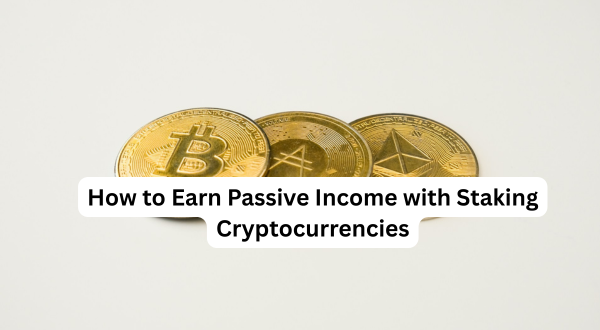In the evolving world of Web3 and decentralized finance (DeFi), one of the most accessible and low-risk ways to earn passive income is through staking. If you’re holding certain cryptocurrencies in your wallet, you’re potentially sitting on an income-generating asset—and staking could help you put it to work.
This blog post breaks down what staking is, how it works, and how you can start earning passive income with it.
🚀 What Is Crypto Staking?
Staking is the process of locking up your cryptocurrency in a blockchain network to help support its operations, such as transaction validation and security. In return, you earn rewards—usually in the form of additional cryptocurrency.
This process is essential in proof-of-stake (PoS) blockchains like Ethereum (after its merge to PoS), Solana, Cardano, and Polkadot. When you stake your crypto, you’re essentially becoming part of the network’s infrastructure.
💡 Why Stake?
Here’s why staking is attractive:
- Passive income: Earn crypto rewards regularly (daily, weekly, or monthly).
- Network support: Help secure the network and validate transactions.
- Low barrier to entry: Many platforms make it easy to stake with just a few clicks.
🛠️ How Staking Works
- Choose a PoS blockchain – You can only stake coins that operate on a proof-of-stake or delegated proof-of-stake system. Examples: ETH, SOL, ADA, DOT.
- Select a staking method:
- Self-staking: Run your own validator node (requires technical skills and high minimums).
- Delegated staking: Delegate your crypto to a validator node via a wallet or exchange (simpler and beginner-friendly).
- Lock your tokens – Depending on the network, your funds may be locked for a set period, or you may be able to unstake them at any time.
- Receive rewards – Rewards are distributed periodically, usually in the staked token.
🔍 Where to Stake
You have multiple options for staking, each with its own pros and cons:
1. Exchanges (Beginner-Friendly)
- Examples: Binance, Coinbase, Kraken
- Pros: Simple, no technical knowledge required
- Cons: Lower control, custodial (they hold your keys)
2. Wallets
- Examples: Trust Wallet, MetaMask (via integrations), Keplr, Ledger
- Pros: More control, easy delegation
- Cons: Must choose a reliable validator, slightly more setup
3. Staking-as-a-Service Platforms
- Examples: Lido, Rocket Pool, Ankr
- Pros: Liquid staking (you can use staked tokens elsewhere)
- Cons: Platform fees
📈 How Much Can You Earn?
Returns vary by network and staking method, but here’s a general range (as of 2025):
- Ethereum (ETH): 3–5% APR
- Solana (SOL): 6–8% APR
- Cardano (ADA): 4–6% APR
- Polkadot (DOT): 10–12% APR
Note: These are estimates. Always check current rates and validator fees before staking.
⚠️ Risks to Consider
- Lock-up periods: Some blockchains require a lock-in period before you can withdraw your funds.
- Validator performance: If your chosen validator performs poorly or gets slashed (penalized), you may earn less or even lose funds.
- Price volatility: Crypto markets are volatile, so while you earn rewards, the token’s value might drop.
- Custodial risk: If using exchanges, you rely on their security.
🧠 Final Tips for Staking Success
- Research validators – Choose ones with good uptime and low fees.
- Diversify – Spread your staked assets across different networks or validators to reduce risk.
- Stay informed – Keep track of reward rates, protocol changes, and lock-up rules.
✅ Conclusion
Staking is one of the easiest entry points into Web3 for earning passive income. Whether you’re a crypto beginner or already holding PoS tokens, staking allows you to make your assets work for you—while contributing to the security and functionality of decentralized networks.
Want to start small? Try staking on a centralized exchange to learn the ropes—then graduate to wallets or staking platforms for more control and rewards.
 UBUCH ubuch | Honest Tech Reviews & Tutorials for Everyone
UBUCH ubuch | Honest Tech Reviews & Tutorials for Everyone




